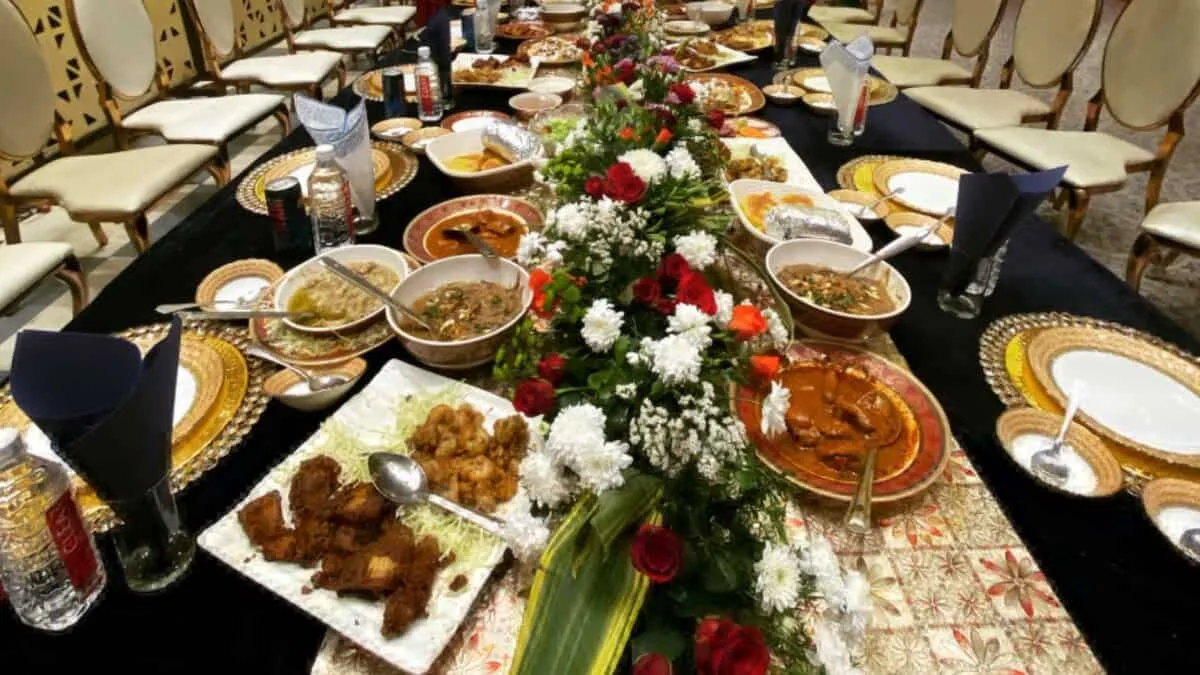If you have ever been to a Hyderabadi wedding, chances are you remember the food more than the bride and groom. The shaadi ka khaana here is no ordinary buffet, it is a well-choreographed symphony of aroma, spice and memory. From the first bowl of a mutton marag to the last spoon of qubani ka meetha, every dish holds a story that dates back generations, and every guest arrives hungry to hear it.
While wedding menus across the world are evolving with trends, Hyderabad remains fiercely loyal to its culinary heritage. While there have been some changes to the menu at Hyderabadi weddings, at its core, certain dishes remain the same. These are the dishes that define the meal, expected by guests and preserved by families, regardless of the scale or setting of the celebration.
Many of these recipes date back to the Nizam era or were influenced by Persian, Turkish, and Mughal cuisines. Over time, they became staples in the local Muslim community and are now associated closely with festive and wedding occasions. Siasat.com explores the signature dishes that continue to be at the heart of every Hyderabadi Muslim wedding.
Signature dishes of a Hyderabadi wedding
1. Marag and Naan
Long before the platters of kebabs and rolls came along, Marag was the staple starter at weddings. It continues to be a beloved dish at weddings. It is a spicy mutton soup made from tender bones, onions, cashew, coconut powder, curd, and warm spices like cardamom, cinnamon, and cloves. It’s thin in consistency but deeply flavorful, often served with naan or sheermal. The rich broth sets a warming tone for the meal ahead.

2. Hyderabadi Biryani
The centrepiece of every wedding, this dum-cooked rice dish pairs basmati grains with marinated meat (mostly mutton), saffron, fried onions, and a precise spice blend. Slowly steamed in sealed pots over a wood or coal fire, wedding biryani has a more rustic taste and aroma than hotel versions, thanks to longer cooking times and seasoned bawarchis overseeing the process.

3. Haleem
Haleem has played an integral role in weddings for decades now. Before extravagant weddings became a thing, haleem and lukhmi were the only foods served to guests. Originally introduced by the Chaush Arabs, Hyderabadi haleem is a thick, protein-rich stew made from pounded wheat, lentils, and mutton. Though associated with Ramadan, it is included in wedding menus for its rich texture and hearty flavour, topped with fried onions, ghee, lemon juice, and garnished fresh.
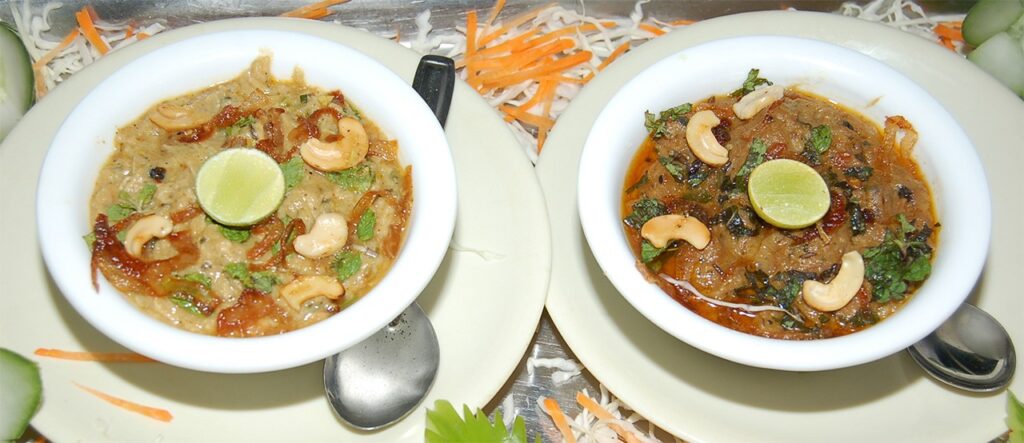
4. Mirchi ka Salan and Bagara Baigan
Often considered the most overlooked items on the wedding menu, Mirchi ka Salan and Bagara Baigan may not be the stars of the show, but they are absolutely essential. These side dishes are traditionally served alongside biryani and offer a balance of tangy, spicy, and nutty flavours. Despite rarely being the first thing guests reach for, no Hyderabadi wedding feels complete without them. Their absence would raise eyebrows more than their presence earns praise.
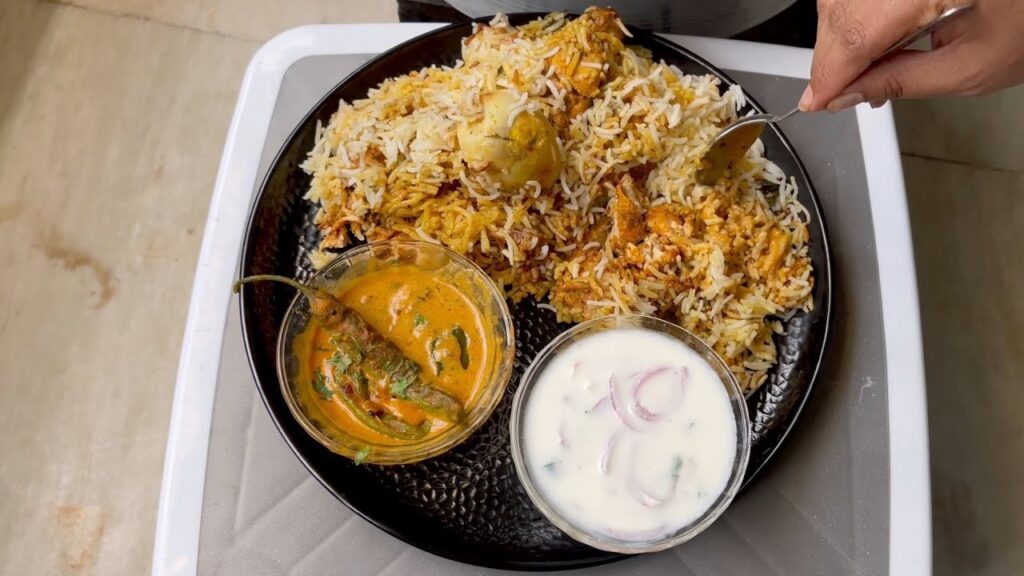
5. Red Chicken
Another overlooked dish is the Red Chicken (also called Shaadi waali chicken), but no wedding menu is complete without it. Interestingly, this spicy red curry is usually not the highlight on the main day. It often shows up on the table the next morning, savoured with leftover naan or rice, becoming a nostalgic favourite of post-wedding meals.
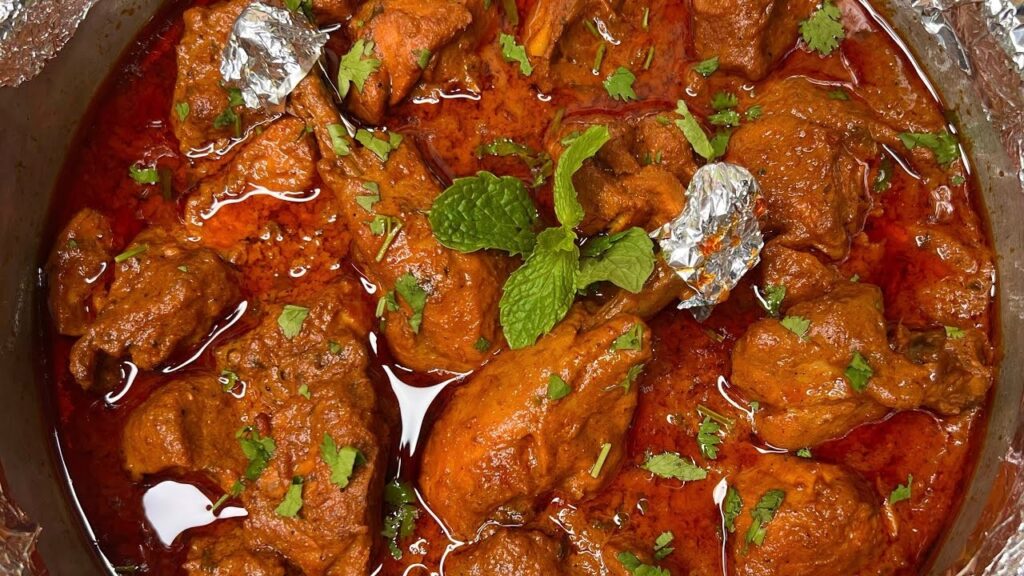
6. Qubani ka meetha
No Hyderabadi wedding is complete without this iconic dessert made from dried apricots. While the traditional version is simply stewed apricots served with malai or custard, modern interpretations have taken over wedding dessert tables in the form of Qubani Trifle: a layered treat with ice cream, sponge cake, and dry fruits. Although it has received a contemporary twist, Qubani ka Meetha still proudly holds its place in the wedding menu.
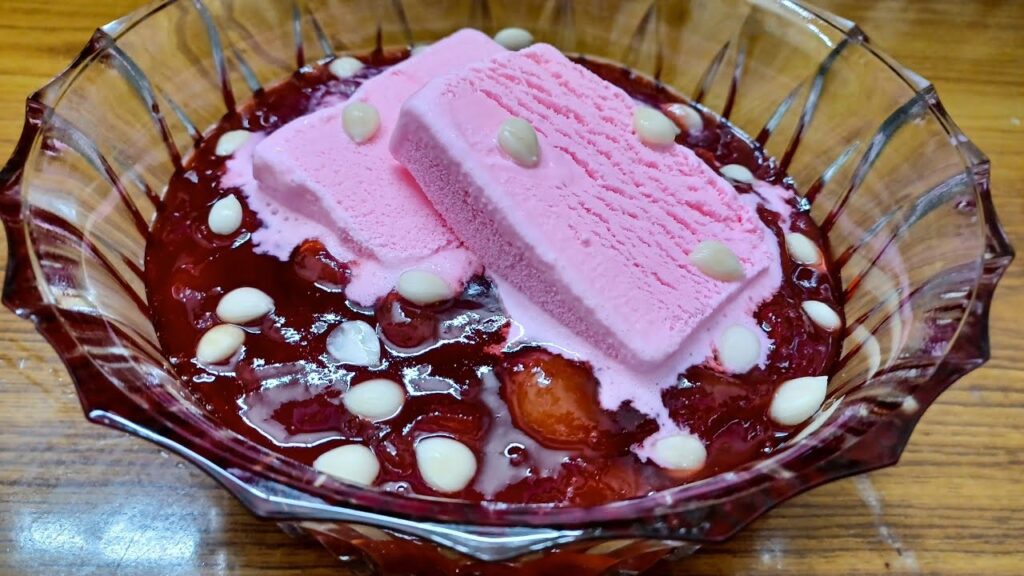
In today’s age of extravagant weddings and increasingly elaborate menus, it is easy to forget that sometimes, less is more. While modern weddings often boast a long list of fusion dishes and international cuisines, the soul of a Hyderabadi Muslim wedding lies in its simplicity and timeless culinary staples. Even with a handful of traditional dishes, the meal feels complete, rich in flavour, history, and nostalgia.

